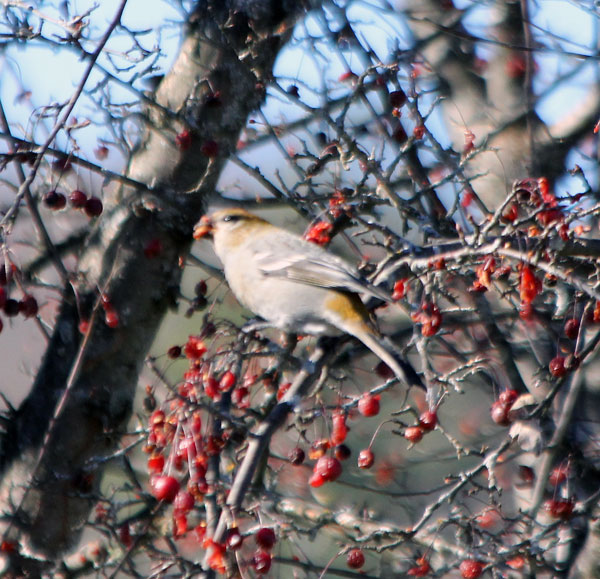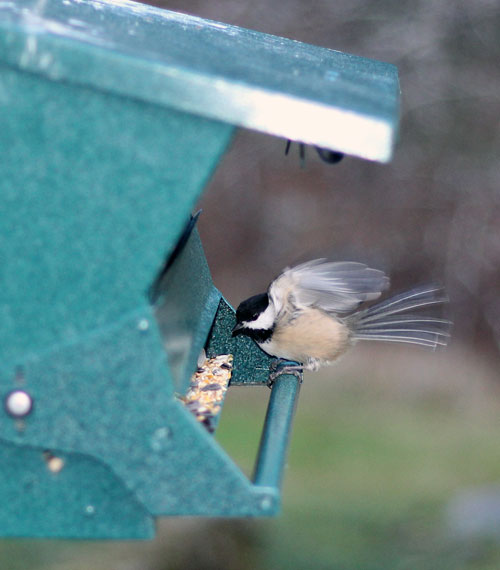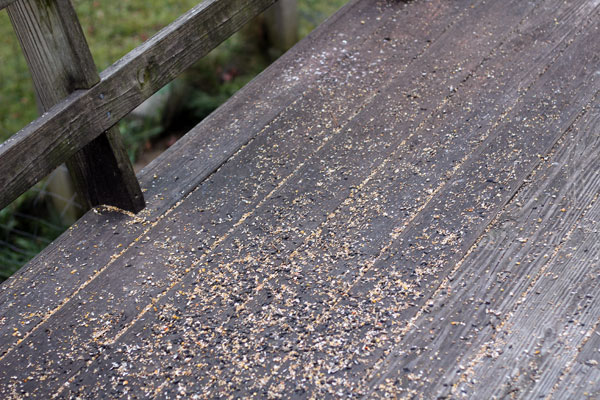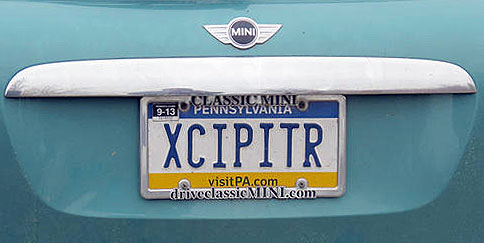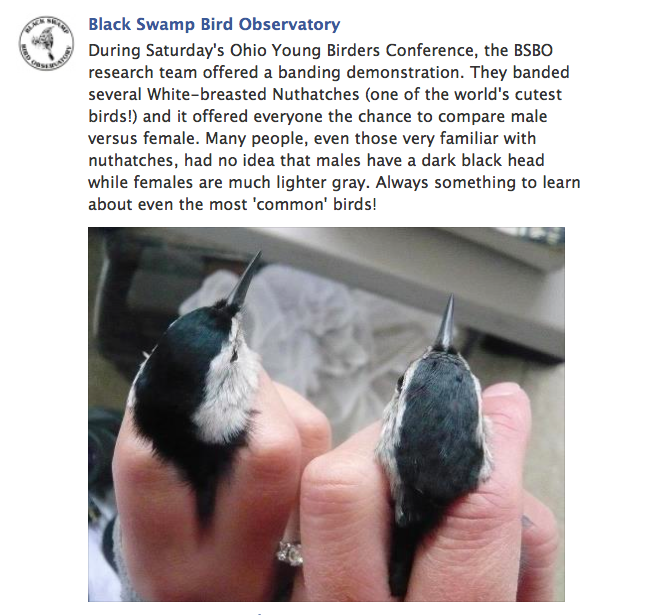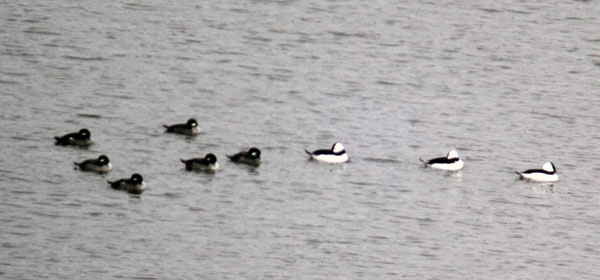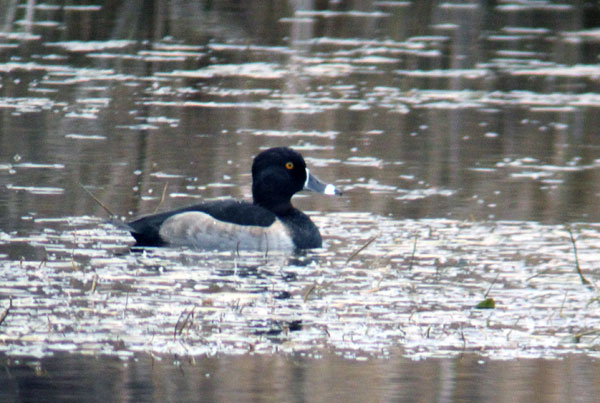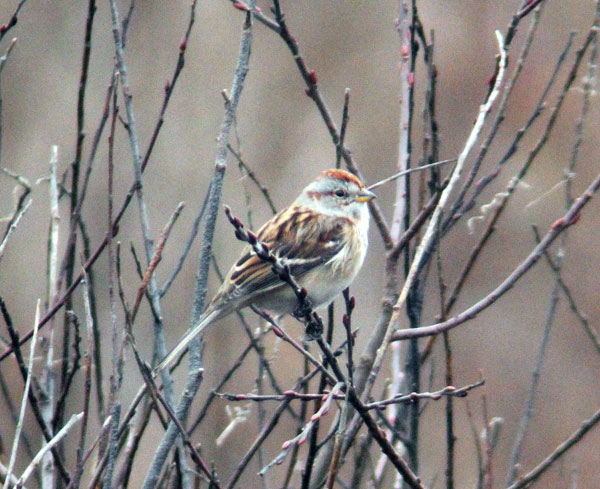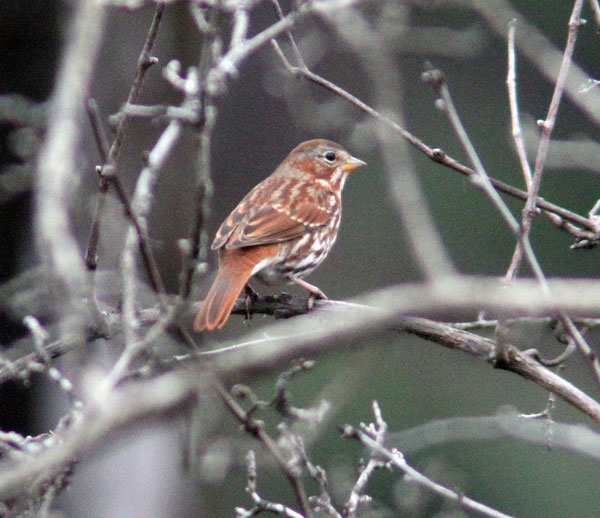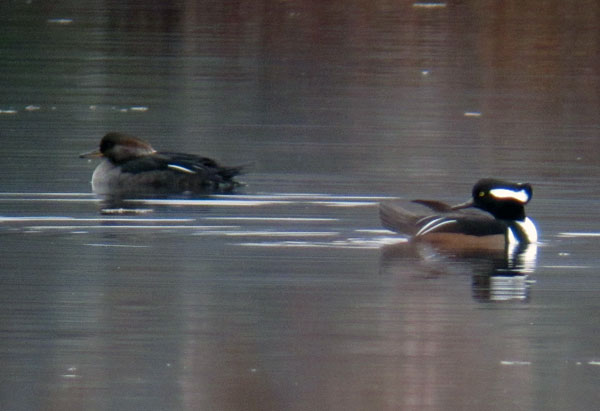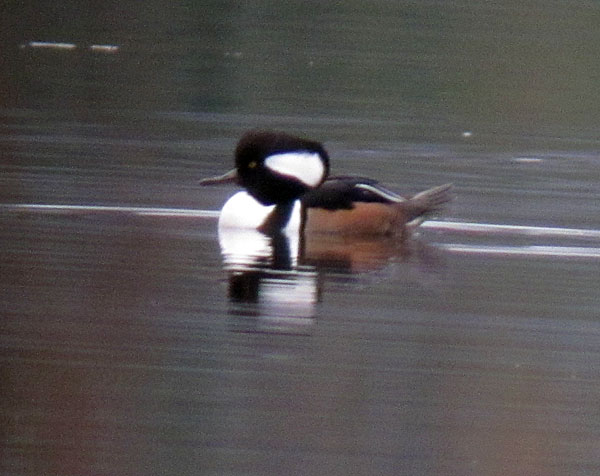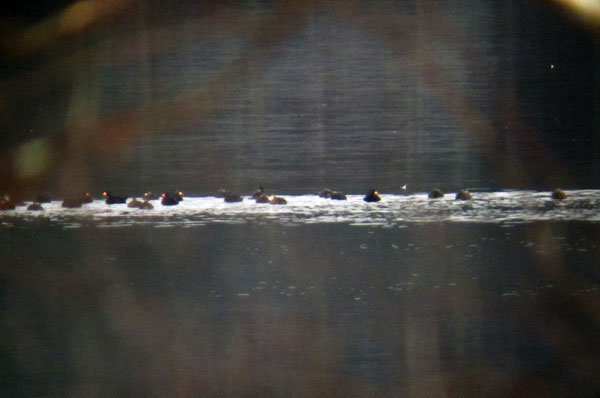As I have noted before, a Canadian ornithologist, Ron Pittaway, each year issues a Winter Finch Forecast. He notes that there is a “widespread tree seed crop failure in the Northeast” this year. It looks like a good year for winter birds — we’re already seeing a lot of Purple Finches, Dark-eyed Juncos, and hundreds of Pine Siskins.
In the last couple of weeks, I’ve seen reports of sightings of gaggles of Bohemian Waxwings and Pine Grosbeaks all over Vermont. Friends of mine have reported berry trees laden with birds and yet, I’ve yet to come close to one of the visitors. Until today….
Last night, before a board meeting of the North Branch Nature Center, I was whining to Chip, the ED, about all the reports of Pine Grosbeaks. He asked, “Have you seen them up at Rumney in the fruit tree?”
Rumney School is about a half-mile up the road and so this morning, after an appointment, I drove by the school and noted some birds in the tree in front. I carefully parked out back and grabbed my camera, aware that school is in session and guys wandering around with binos and cameras may look suspicious. I got close enough to make out the Pine Grosbeaks and took a few shots and left. The birds were used to people and just filling their craws with the red berries.
The neat outcome was that when I entered the sighting into eBird, it marked it as a new life bird. I had not realized that I didn’t have Pine Grosbeaks so it turned out to be not only a year bird, but my #350 life bird. Thanks Chip.

